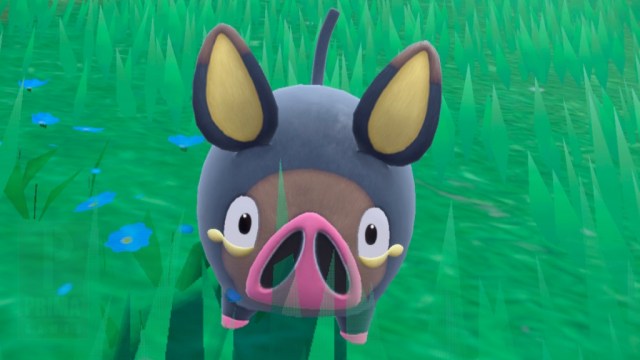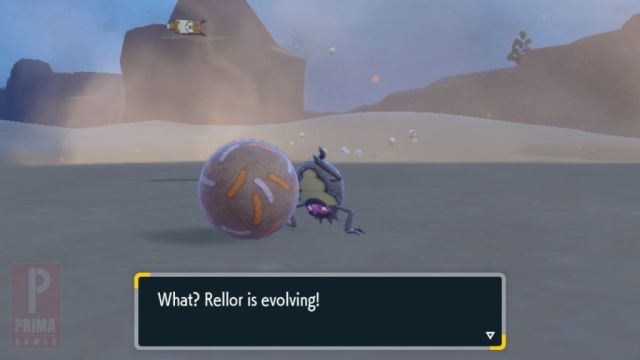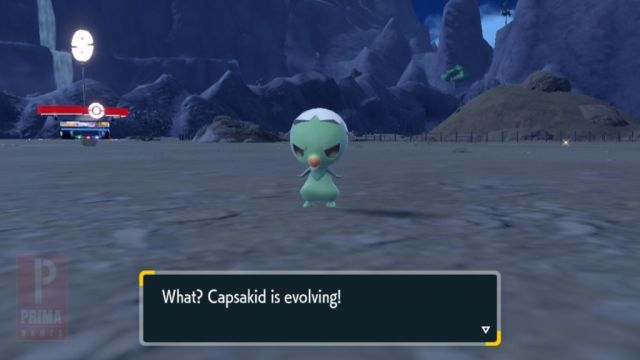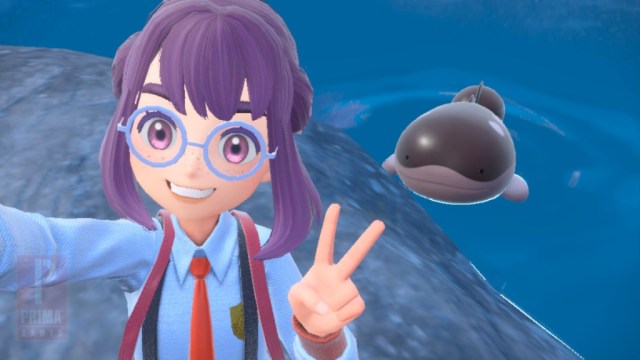All Pokemon in Scarlet & Violet Inspired by Spanish Culture, Food, and More
Olé! Here's a deep dive on the Spanish inspiration for Paldea's Pokemon

The Paldea region is based on Spain and its many different landscapes, beautiful cities, and countless, fantastic eateries. So, it only makes sense that many of the Pokemon that have arrived in Generation 9 are either explicitly inspired by moments of Spanish history, food, or culture, or are more amalgamated nods.
For the sake of brevity (this would be a thesis in Paldean Pokemon studies otherwise), I’ll be examining Pokemon families which have Spanish inspiration, and excluding those who don’t.
Sprigatito, Floragato, and Meowscarada
Sprigatito’s name is a combination of “sprig”, a small stem with leaves or flowers and “gatito”, which means kitten. Floragato is Spanish for flower cat, but Floragato is likely inspired by Puss in Boots, though not the original (Italian) folktale. Rather, by the Puss in Boots in Shrek, who spoke Spanish and was inspired by The Mask of Zorro. That really suits Floragato’s mask as well. Meowscarada is a combination of “meow” and “mascarada” which means masquerade in Spanish. “Descarado”,the word for “shameless”, may also have been an inspiration as it’s a colloquial term to tease someone for being mischievous, which seems to fit Meowscarada’s Dark typing.
Fuecoco, Crocalor, Skeledirge
Fuecoco’s name is a combination of “fuego”, fire, and “coco”, coconut. So, fire coconut. Which really suits his appearance. A little known fact is that Spain has coconuts on its Canary Islands. But this is also potentially a reference to the Drac de Na Coca, and is on display in a Mallorca, Spain. Fuecoco is also likely a line is meant to physically look like ghost peppers, as Spain is well known for is peppers and spicy foods.
Crocalor’s name is a combination of croc, is short for crocodile, and “calor”, heat. Crocalor seems to be inspired by the legend of crocodiles keeping birds to help them clean their teeth. So, Crocalor has an egg on its head that he protects, and the nest itself looks like a Sombrero. Sombra also translates to shade, which pairs well with Crocalor’s name.
For Skeledirge, skele is short for, of course, a spooky skeleton because Skeledrige is a Ghost-type. But Dirge is a Catholic song for the dead, which speaks to Catholicism’s influence in Spain. But it also may be influenced by Antoni Gaudi’s El Drac, a statue that shares Skeledirge’s squat legs and geometric patterns.
Quaxly, Quaxwell, Quaquaval
Quaxly, beyond having a name with “Quack” in it, is distinctive because of its blue plumage. It’s likely that this Water starter was inspired first by the White-headed duck of Spain, known for its trademark blue bill, which is a match to Quaxly’s blue plumage. Quax Goods is also a board wax company in Barcelona that sells duck-shaped wax.
Quaxwell’s legs are undoubtedly inspired by Spanish breeches (gregüescos), which puff around the thighs. His head plumage also evolves to more similar to a military helmet (the M1926 helmet of Spain in particular).
Quaquaval’s design is likely inspired in part by Samba dancers in Brazil, who are known for their colorful plumage and moves. But based on Quaquaval’s outfit, Paso doble is also a possible inspiration, as the male leads in this dance dress like matadors, or bullfighters. Quaquaval’s turban may also be a nod to historical Islamic Spain, or perhaps the toque hat, which had its vogue moment during the reign of King Philipp II of Spain.
Related: All Pokemon Scarlet and Violet Version Exclusive Pokemon – Listed
Lechonk and Oinkologne

Lechonk is inspired by lechon, the roasted suckling pig, and a dish that’s been imported to Spain’s many colonies. But it’s likely that both Lechonk and Oinkologne’s coloring is likely drawn from the Cerdo Ibérico, the black Iberian pig which has a long historical lineage in Spain.
Pawmi, Pawmo, and Pawmot
The Pawmi line in inspired, as the name of its final evolution implies, by the alpine marmot. The largest rodent in Europe and a rodent that is also capable of sitting on its back haunches.
Smoliv, Dolliv, Arboliva
Spain is renowned for its olives, which are common across the Mediterranean, so it only makes sense that the latest in the three-stage grass Pokemon line be inspired by them. Smoliv is a combination of small and olive, Dolliv a combination of doll and olive, and Arboliva is a combination of arbor and olivia, olive.
Fidough and Dachsbun
There are endless bakeries in Spain, many of them filled with delicious breads and pastries. While Fidough and Dachsbun’s designs are mostly inspired by braided breads, of which there are many, their circular ears look similar to Pan de Cruz.
Greavard and Houndstone
Greavard is a dog that’s died without ever interacting with a human and, if given even an ounce of affection, will endlessly follow you. Perhaps this is a nod at Spain’s large stray dog populations. But more likely is that it’s a nod to the sacrificial practices that occurred in the Iberian Peninsula 4,200 years ago, when young dogs were sacrificed and buried by humans. Somehow, dogs, death, and funeral rites were intertwined in this ear, though the full meaning of this practice has yet to be discovered.
Related: How to Get Klawf in Pokemon Scarlet and Violet
Maschiff and Mabosstiff
Maschiff and Mabosstiff are both inspired by mastiffs, and the dog of Spain is undoubtedly the Spanish Mastiff. The Spanish Mastiff is a big, droopy dog that protects its family. This is likely the inspiration of both the Maschiff’s family appearance and also the Pokedex entry. “It always scowls in an attempt to make opponents take it seriously, but even crying children will burst into laughter when they see Maschiff’s face.” But Mabosstiff embodies the gentle temperament of the Spanish Mastiff even more.
Tarountula and Spidops
Tarountula and its spherical stomach are likely inspired by the myriad of orb-weaver spiders you can find in Spain, though it’s most likely that Tarountula was inspired by the Greek myth of Arachne. Spidops are more likely inspired by the Spanish huntsman spider, a spider that, as its name implies, hunts down its prey. They’re territorial like Spidops.
Rellor and Rabsca

Rellor is inspired by dung beetles and Rabsca the more symbolic Egyptian scarab. You can find dung beetles in North West Spain. They tend to be either iridescent or dull but either way seek out dung. Rabsca is inspired by the Egyptian scarab (which is also a dung beetle), and its motif of life, death, and rebirth.
Nymble and Lokix
Nymble and Lokix are likely inspired by the Mediterranean Field Cricket, a large, black cricket found across the Mediterranean. They fight by kicking with their hindlegs, which might be referenced by the way Lokix stands to fight. Though it’s more likely that Lokix design is more Japanese inspired.
Wattrel and Kilowattrel
Spain has no shortage of coastal birds, but it’s likely that Wattrel and Kilowattrel were inspired at least in part by the European storm petrel. Like Wattrel and Kilowattrel, the storm petrel feeds by skimming off the ocean’s surface, though I’m of the opinion that Wattrel looks closer to the Western yellow wagtail and that Kilowattrel, with its ocean-environment and throat sac, are most likely inspired by the frigatebird.
Related: How Many Pokemon Are in Pokemon Scarlet & Violet? – Answered
Flamigo
Flamigo is a combination Flamingo… and amigo (Spanish for friend). Flamingo is actually based on flamengo (Spanish for flame-colored) and that’s pretty cool. Flamingos can also be found in Southern Spain during the early months of mating season.
Flittle and Espathra
Flittle and Esparthra don’t seem to have explicit Spanish inspiration beyond their frills and tail feathers, which resemble the multi-tiered frills of the traditional flamenco skirt.
Finizen and Palafin
Dolphins are a very common sight in the Strait of Gibraltar to Spain’s South, with Finizen most likely being inspired by the bottlenose dolphin. As for Palafin, it’s likely that the concept is simply inspired by the Superhero era we find ourselves in.
Veluza
Veluza is likely inspired by barracuda or, even more likely, the merluza. Merluza is one of the top fish in Spanish markets and it, like Veluza, has a delicate flavor.
Gimmighoul and Gholdengo
The inspiration for Gimmighoul is likely twofold. It is possibly a nod to the Spanish conquistadors, who pillaged various countries and brought back their riches to Spain. But more likely, it is inspired by Patufet, the main character in a myriad of Spanish folktales, and is known to be quite small (the size of a garbanzo bean), good-natured, and always carrying a coin. Usually when people spot Patufet, they only see the coin, and people must look for him very carefully. Much like trainers on their quest to find enough Gimmighoul Coins.
Gholdengo, however, may be inspired by the fact that many “Spaghetti Westerns”, while produced by the Italian film industry, were actually filmed in Spain. Gholdengo has his belt slung to the side, like a Hollywood cowboy, and its ability may be a refence to the 1927 silent Western movie with the same name.
Capsakid and Scovillain

Capsakid and Scovillain don’t attempt to hide their Spanish roots. In their Pokedex entries, it explicitly states that Paldean (Spanish) dishes can be extremely spicy because parts of Capsakid are included in the ingredients. Capsakid, which gets its name from “Capsicum” the genus for all chili peppers, and “kid”, further cements this. Scovillian, likewise, is the combination of the Scoville Scale, which ranks how spicy a chili is, villain, and possibly reptilian.
Armarouge and Ceruledge
Armarouge and Ceruledge have become almost representative of Pokemon Scarlet and Violet, and that makes sense when it’s clear that part of their inspiration comes from Spain’s national hero, El Cid. El Cid was a Castillian knight who fought in the medieval period, who fought against a myriad of armies of Spain.
Armarouge’s name is a combination of arma, (Spanish for weapon), armadura (armor), and rouge (French for red). Ceruledge’s English name is a combination of cerulean and edge. One of these was a little more clever than the other.
Glimmet and Glimmora
While there are no poisonous rock flowers in Spain, Glimmora looks very similar to a Spanish bluebell.
Nacli, Naclstack, and Garganacl
Nacli and its line, beyond looking like the living embodiments of a Mario and Minecraft homage, is also a nod at Spain’s rather pretty rock salt mines. North of Barcelona is the Cardona Salt Mountain, which is full of rock salt. Perhaps unsurprisingly, it also looks like the mining area north of Levicinia.
Bramblin and Brambleghast
While you might not necessarily associate tumbleweeds, the inspiration from Bramblin, with Spain, they’re a common feature in deserts. And the Canary Islands of Spain are host to Gran Canaria, which in certain areas looks like it could be the Wild West of the USA. Likewise, Spain is where many “Spaghetti Westerns” were filmed.
Related: How to Catch Gimmighoul in Pokemon Scarlet and Violet
Klawf
While Klawf looks more like your quintessential crab, there’s no doubt that with its typing and bristles that it’s not inspired, at least in part by the hairy stone crab. Hairy stone crabs cling to rocks and can be found in Spain.
Bombirdier
Bombirdier is a combination of bomb, bird, and brigadier. Storks are a common sight in Spain, as the country falls beneath the stork’s migratory route. As for why Bombirdier enjoy pranking others so much, perhaps it’s inspired by mischievous birds like crows and magpies.
Dondozo
While Dondozo’s name is a Japanese pun, it looks remarkably similar to the Wels Catfish, a massive type of catfish found in the River Ebro in Spain.
Wiglett and Wugtrio
Wiglett is likely inspired by the garden eels found in the Canary islands, in terms of how they poke out of the sand, and by Angulas, thin white baby eels that are a Basque delicacy. It’s likely that Wugtrio is inspired by the brown moray eel, as it prefers to take shelter in rocks and coral. It’s also found in the Canary Islands.
Toedscool and Toedscruel
Toedscool and Toedscruel are likely inspired by the verdigris agaric mushrooms found in León, Spain. These mushrooms are slimy and start off green or blue before turning ochre and brown. They’re reputed to be poisonous as well.
Frigibax, Arctibax, Baxcalibur
While Frigibax looks a little closer to one of the first Godzillas, it’s likely that it and its line are inspired by a genus of spinosaurid dinosaur, and most likely the Vallibonavenatrix. This dinosaur was found in Castellón, Spain.
Paldean Wooper and Clodsire

Paldean Wooper is likely inspired by the Spanish ribbed newt, which secrets poison through its skin and has sharp barbs running along the length of its body. Clodsire is inspired perhaps by a clod of dirt, but secondly by the Weever fish found in Spain, which is poisonus.
Paldean Tauros
There’s no surprise that Tauros features prominently in the Spanish influenced Paldea region. Bull fighting and the running of bulls is a longstanding historical tradition. But the true inspiration for Paldean’s striking black is likely the Osborn bull – a black silhouetted image of a bull that can be seen installed on hilltops and along roads throughout much of Spain. Now, these black bulls are considered an unofficial national emblem.
